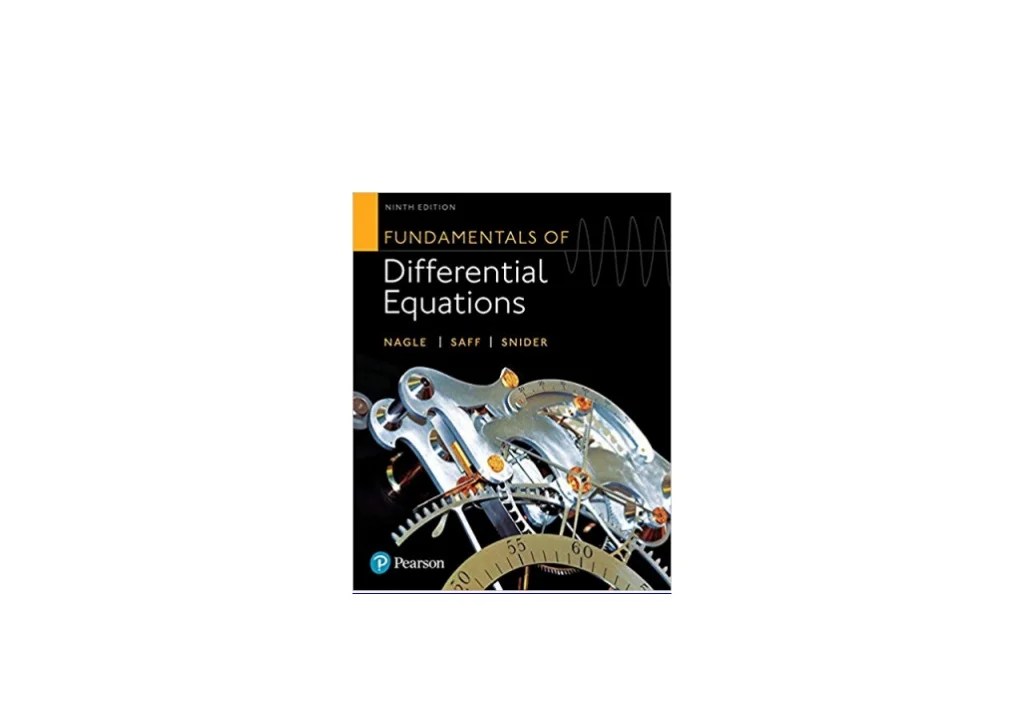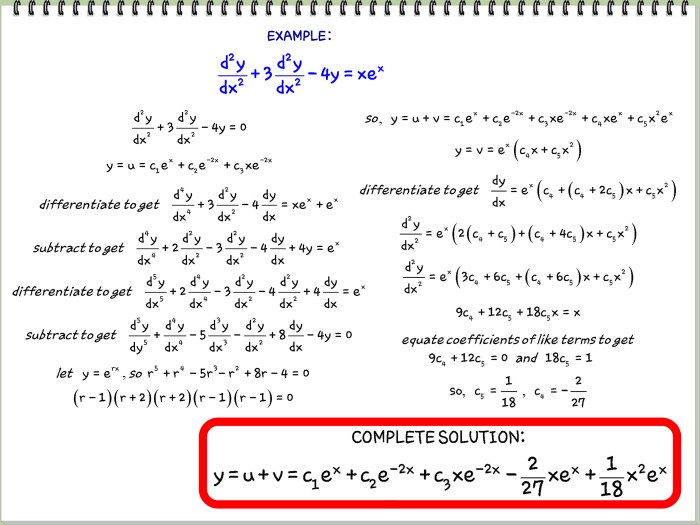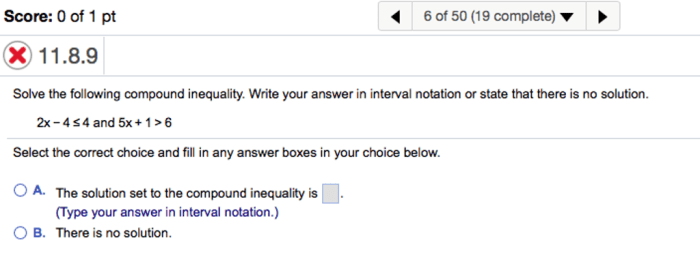Fundamentals of differential equations 9th edition pdf – Embark on a mathematical journey with “Fundamentals of Differential Equations, 9th Edition,” a comprehensive guide that delves into the intricacies of differential equations, their applications, and the analytical and numerical techniques used to solve them. This text empowers students and professionals alike to master this foundational subject and its far-reaching applications in various scientific disciplines.
With its lucid explanations, step-by-step examples, and engaging discussions, this book provides a solid foundation for understanding the concepts and techniques of differential equations. It equips readers with the skills to tackle complex problems and gain insights into the behavior of real-world phenomena governed by these equations.
1. Introduction to Differential Equations

Differential equations are mathematical equations that involve derivatives of one or more functions. They are used to model a wide variety of phenomena in science, engineering, and other fields. Differential equations can be classified into different types, including ordinary differential equations (ODEs) and partial differential equations (PDEs).
ODEs involve derivatives of functions with respect to a single independent variable, while PDEs involve derivatives with respect to multiple independent variables.
Solving Techniques for First-Order Equations
First-order ODEs are equations that involve the first derivative of a function. There are several methods for solving first-order ODEs, including exact equations, integrating factors, and separation of variables. Exact equations are equations that can be written in the form M(x,y)dx + N(x,y)dy = 0, where M and N are functions of x and y.
Integrating factors are functions that can be multiplied by an equation to make it exact. Separation of variables is a method for solving equations that can be written in the form dy/dx = f(x)g(y).
Higher-Order Linear Equations
Higher-order linear ODEs are equations that involve derivatives of a function of order greater than one. The most common type of higher-order linear ODE is the constant-coefficient linear ODE, which has the form y^(n) + a_n-1y^(n-1) + … + a_1y’ + a_0y = f(x), where a_0, a_1, …, a_n-1 are constants and f(x) is a function of x.
Constant-coefficient linear ODEs can be solved using a variety of methods, including the method of undetermined coefficients, the method of variation of parameters, and the Laplace transform.
Applications of Differential Equations
Differential equations are used to model a wide variety of phenomena in science, engineering, and other fields. Some examples include:
- The motion of objects in space
- The flow of fluids
- The growth and decay of populations
- The spread of diseases
- The behavior of electrical circuits
Numerical Methods for Solving Differential Equations
When analytical solutions to differential equations are not possible, numerical methods can be used to approximate the solution. Some common numerical methods for solving differential equations include:
- Euler’s method
- Runge-Kutta methods
- Finite difference methods
Systems of Differential Equations, Fundamentals of differential equations 9th edition pdf
Systems of differential equations are equations that involve derivatives of multiple functions. Systems of differential equations can be used to model a wide variety of phenomena, such as the interactions between populations of different species, the flow of fluids in multiple dimensions, and the behavior of electrical circuits with multiple components.
Systems of differential equations can be solved using a variety of methods, including the method of undetermined coefficients, the method of variation of parameters, and the Laplace transform.
Partial Differential Equations
Partial differential equations are equations that involve derivatives of functions with respect to multiple independent variables. PDEs are used to model a wide variety of phenomena, such as the flow of fluids, the diffusion of heat, and the propagation of waves.
PDEs can be classified into different types, including elliptic, parabolic, and hyperbolic equations. Elliptic equations are equations that involve second-order derivatives of a function with respect to two or more independent variables. Parabolic equations are equations that involve second-order derivatives of a function with respect to one independent variable and first-order derivatives with respect to one or more other independent variables.
Hyperbolic equations are equations that involve second-order derivatives of a function with respect to two or more independent variables.
Boundary Value Problems
Boundary value problems are problems that involve differential equations and boundary conditions. Boundary conditions are conditions that specify the value of a function or its derivatives at certain points or on certain boundaries. Boundary value problems are used to model a wide variety of phenomena, such as the vibrations of a string, the flow of heat in a solid, and the propagation of waves in a medium.
Boundary value problems can be solved using a variety of methods, including the method of separation of variables, the method of Green’s functions, and the finite element method.
Questions and Answers: Fundamentals Of Differential Equations 9th Edition Pdf
What are the different types of differential equations?
Differential equations can be classified into various types based on their order, linearity, and the number of independent variables involved. Some common types include ordinary differential equations (ODEs), partial differential equations (PDEs), linear differential equations, and nonlinear differential equations.
What are the applications of differential equations?
Differential equations have widespread applications in various fields, including physics, engineering, biology, economics, and finance. They are used to model diverse phenomena, such as the motion of objects, the flow of fluids, the growth of populations, and the behavior of financial markets.
What are the advantages of using numerical methods to solve differential equations?
Numerical methods are often employed to solve differential equations when analytical solutions are not feasible. These methods approximate the solution using computational techniques and provide valuable insights into the behavior of the system being modeled.





